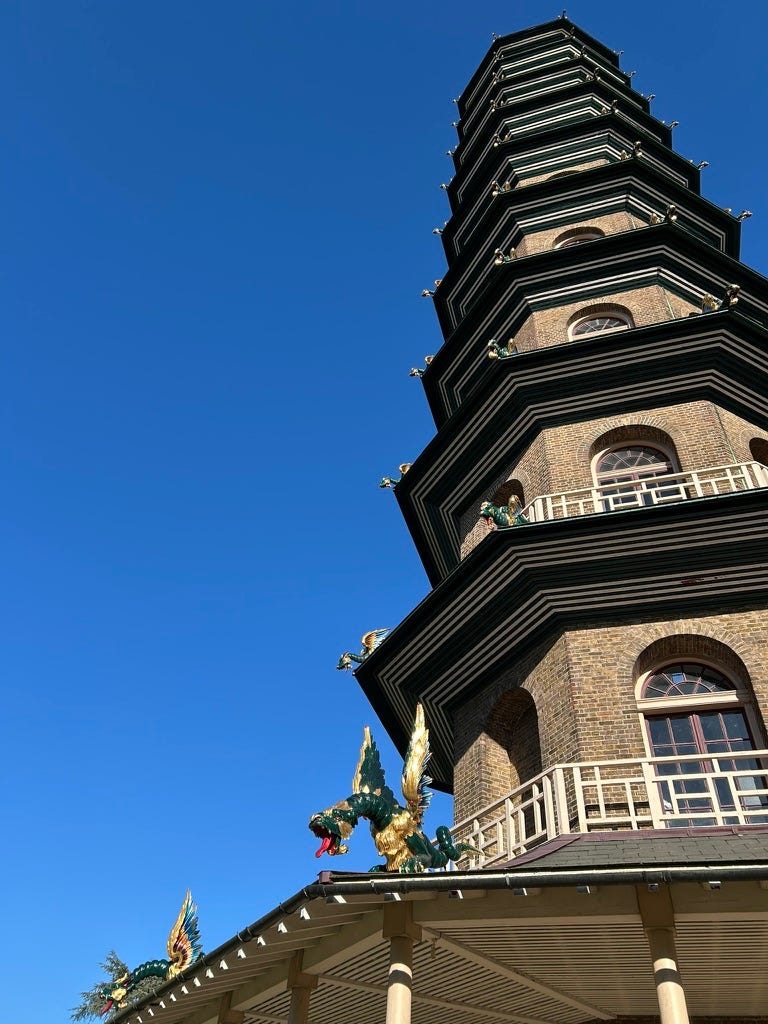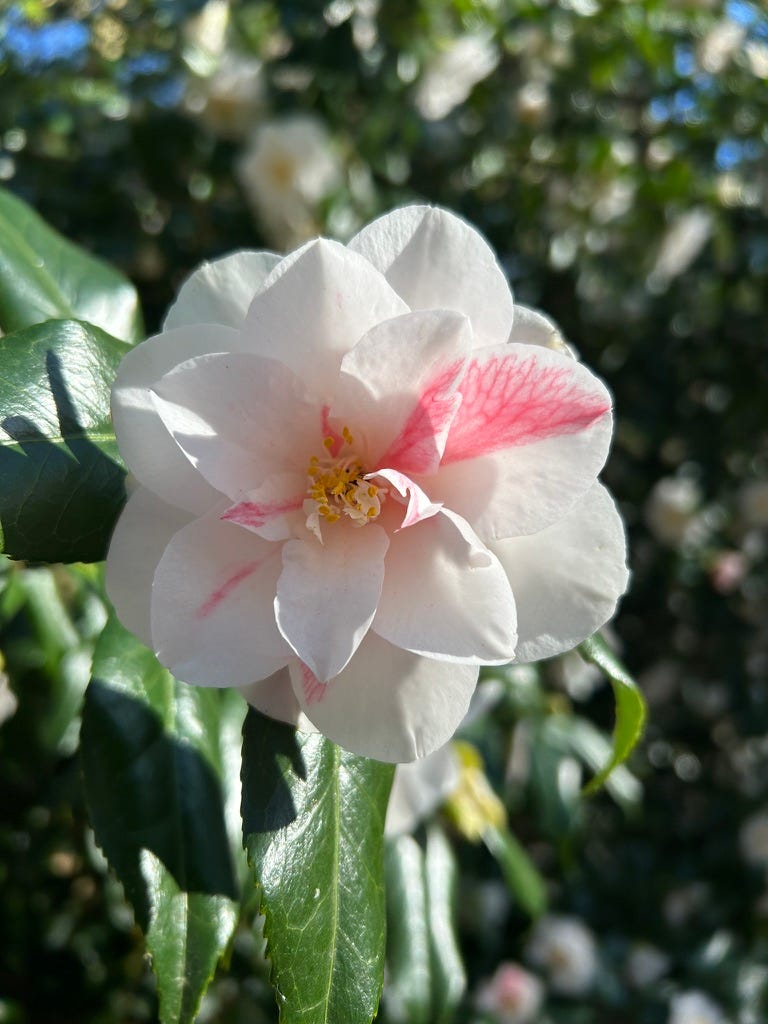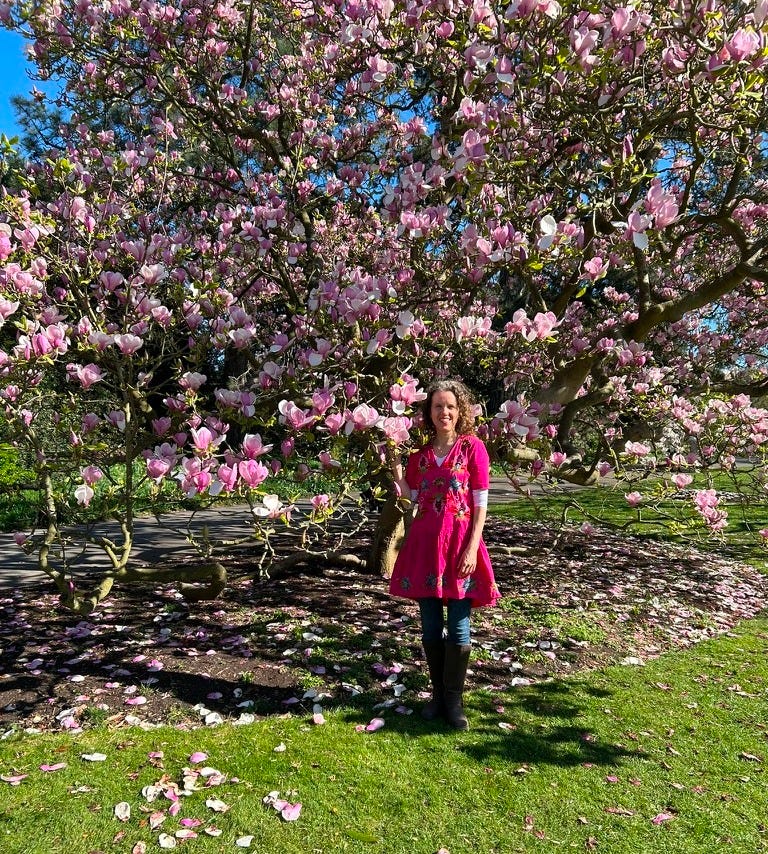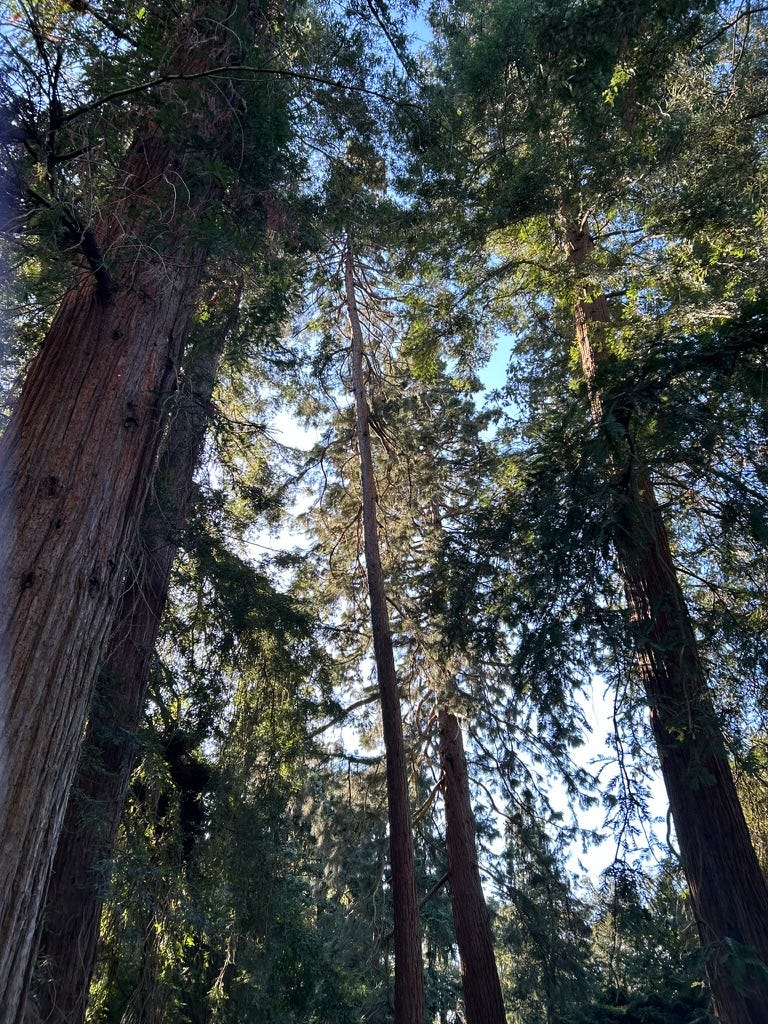Musical memories drifted on the edge of magnolia petals, the earth soaked in echoes, as I rambled through Sounds of Blossom at Kew Gardens.
Time travelling Kew’s leafy paths, we hear trumpets proclaiming the arrival of Edward I’s court in Richmond in 1299, followed by a procession of English monarchs and aristocrats who settled and gardened around Kew. When Sir Henry Capel was promoted to Earl of Tewkesbury in 1692, he created a garden of exotic plants around his house, Kew Park, which then passed to Frederick, Prince of Wales (1707–51). It was the widowed Princess of Wales, Augusta of Saxe-Gotha (1719–72) who put Kew on the map - we hear her instructing the head gardener John Dillman to “compleat all that part of the Garden at Kew that is not yet finished in the manner proposed by the Plan and to keep all that is now finished” with the lofty aim to include ‘all the plants known on Earth.’ She blew the modern equivalent of five million pounds on the project, establishing Kew as an official botanical garden in 1752. By 1761 the Great Pagoda built by Swedish-British architect Sir William Chambers towered over all European buildings.
“A love of music to distraction runs through our family”
Princess Charlotte, eldest daughter of King George III and Charlotte of Mecklenburg-Strelitz
Source: Historic Royal Palaces
Recent research by Sonos and Apple Music found that families who play music out loud at home spend significantly more time together cooking, dancing and having sex. The music-loving Kew Royals were clearly onto this because Princess Augusta bore 9 children and her son George III fathered 15 children with his wife, Charlotte of Mecklenburg-Strelitz. The soon-to-be seventeen-year-old Queen played harpsichord whilst crossing the North Sea to meet and marry her new husband in 1761. Having brought two with her, the couple brought three more harpsichords in 1764, one of which can still be seen at Kew Palace.
Together the couple filled their world with music, continuing the royal patronage of Handel, who composed Sing to God, and Rule Brittania for Princess Augusta’s wedding. Charlotte supported composer Joseph Hayden after the death of his Austrian patron and commissioned Johann Christian Bach, (son of JS Bach) to lead the Queen’s Band, holding bi-weekly performances including her children and mother-in-law in the royal residences. An eight-year-old Mozart performed and accompanied the singing Queen in 1764, dedicating six harpsichord, violin and flute sonatas to her. Fittingly, the star-studded soundtrack of Queen Charlotte’s Netflix Bridgerton Story features a 74-piece Global Orchestra playing If I Ain’t Got You by Alicia Keys.
Queen Charlotte, thought by historian Mario de Valdes y Cocom to be descended from the African Portuguese noblewoman Margarita de Castro e Souza - Wiki images
“Farmer George” and Charlotte played flute and harpsichord duets and gardened together at Kew, aspiring to a modest, secluded family life. However, the beautiful music of their marriage was rocked by George’s episodes of mental illness, during which he violently assaulted family members. Echoing her Hanoverian Sophia-Charlotte predecessors, Charlotte’s domestic life became a nightmare. In 1788, we hear her crying out "What will become of me?”, her hair turning white overnight. Yet despite her despair, she insisted on accompanying the King to Kew, declaring “Where the king is, there I shall be.” George endured torturous treatment on the ground floor of Kew Palace, whilst his family lived upstairs.
Both publicly and privately George was a complex man, devoted yet controlling of his loved ones and subjects. Whilst his simple farming ways were endearing, he passed laws to prevent members of his family from marrying without his consent and American colonialists branded him a tyrant, breaking free from British rule. He demonstrated great empathy towards a female servant who attacked him saying “The poor creature is mad. Do not hurt her, she has not hurt me,” yet also profited from the Atlantic slave trade. Founder of the British Library, his mind was both brilliant and besieged. During his final seclusion in Windsor Palace from 1811-1820, he consoled himself by playing flute and harpsichord. Too unwell to be told of his Queen’s death at Kew in 1818, he often dressed in black ‘In memory of George III who was a good man.’
Both nature and music can help us remember what Tibetan Buddhist Chögyam Trungpa Rinpoche called the basic goodness in ourselves and life. Today millions of visitors to Kew’s Mindfulness and Wellbeing trail follow the footsteps of a King trying to find his way back to the ‘good man’ he mourned. Volunteers such as Jerry Spencer have found solace from addiction in the community garden and a Kew Exhibition ‘George III: The Mind Behind the Myth’ featured five Londoners talking about objects representing their mental health experiences. Patrick Sandford described the exhibition as ‘a gift’ which explored not only George III’s experiences, much of which remain unknown but also ‘what is known about mental health today.’
My musician friend and I spend an idyllic afternoon wandering around Kew, weaving through ‘Blossom Hotspots’ where music speakers planted amidst petal-laden trees waft compositions by Royal College of Music students into the fragrant air. Beyond effervescent trees full of chirruping selfie-takers, we find quieter paths circling glittering lakes and dells of Spring flowers. Immersed in a state of floral reverie, we bathe in the opulent abundance of Rhodendron and Camelia blossoms. At Syon Outlook, the great snake back of the Thames rears into sight, golden Spring light bounding over its rippling surface. Amidst the profound stillness of the Redwood Grove, where birdsong and light dapple the quiet majesty of the towering trees, a deep sense of inherent joy and contentment comes singing back to me. I breathe, I listen and I remember.












What a gorgeous outdoor 'exhibition' - thank you for sharing it
What a perfect time of year to enjoy those gorgeous gardens! Music, history and flower facts - thank you for this thoughtfully guided tour 💚